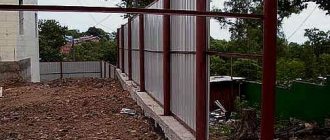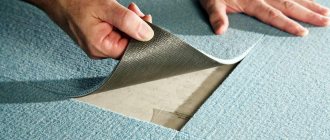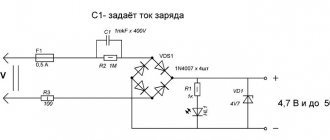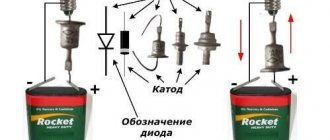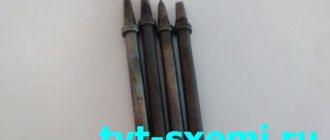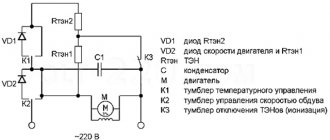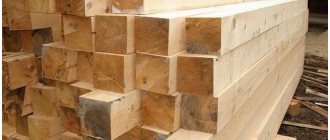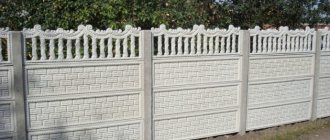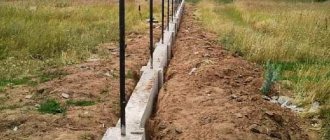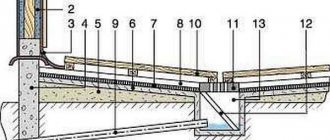Types of concrete fence
You have come across almost all types of concrete fences in one way or another in everyday life, but we cannot help but touch on their external differences from each other:
Stacked fences are a structure made of support posts with grooves on the sides. Concrete slabs, which can be either smooth or with decorative elements, are inserted into these recesses.
The design allows you to create gaps between the blocks, which makes the fence less monolithic and heavy. Such a wall is quickly erected and is often used in suburban areas. A sectional concrete fence is often made to resemble stone, brick and even wood.
Monolithic fences are the most reliable of all the fences presented, but their construction requires a good foundation. Most often used to protect industrial areas. The fence is mostly smooth, without any decorations.
A block fence is assembled from large brick-like blocks under which a foundation is laid. Allows finishing with plaster or tiles. A special advantage is that it does not require additional supports in the form of pillars. Looks good even without any additional finishing.
Some concrete slabs are installed in specially prepared glasses. This design does not require a foundation and, if necessary, can be disassembled and moved to any other location. Excellent for construction and similar work when the fence needs to be erected temporarily.
Panel quality
When purchasing a concrete fence, you need to evaluate the material and all structural elements. Concrete grade of at least M500 must be used for production. Visually, it has a light gray color, which can be seen on unpainted parts. There should not be cracks or a large number of pores on the surface, since moisture will penetrate into them, which will lead to gradual destruction. Equally important is the accuracy of production of supports for prefabricated fences - the panels must fit neatly into the grooves and not fall out of them.
It is better to purchase all fence elements from large manufacturers who specialize in the production of reinforced concrete products. It is also recommended to immediately purchase the entire set of decorative parts that are included in the selected series. Manufacturers often offer to immediately paint products at the client’s request.
Washed concrete
Particularly worth noting is the technology for the production of “washed concrete”, when at one stage the top layer is removed, exposing the stone chips included in its composition. This approach allows you to achieve a decorative look without extra costs.
Stones give a fence or fence a natural and natural look that fits perfectly with green shrubs and other plantings.
Installation methods
The following fences are installed:
- Truck crane. Suitable for self-standing, monolithic concrete sections. For installation work, 3–4 people are enough. With preliminary arrangement of the foundation, the total construction time will be from 2 to 3 weeks.
- On your own. In this way it will be possible to install a European or type-built fence. The weight of one slab does not exceed 70 kg, so 2-3 people can handle all the work. With the exception of pouring the base, the prefabricated structure is assembled quickly and easily, since all the necessary parts are supplied included.
Regardless of the method, sections should be installed separately, strictly observing the level.
Advantages and disadvantages
One of the biggest disadvantages is the price of a concrete fence. It is higher than that of wood or galvanized. But with all this, it has quite a few advantages:
- Such fences are extremely durable and will last for decades. At the same time, you do not need to take special care of them. Their composition is deliberately selected in such a way as to withstand temperature changes in our climate. Despite its high price, when calculated in terms of service life and reliability, it is not so expensive in the long term.
- Installation and installation does not require a lot of time and highly qualified employees. Fences are almost always delivered ready for assembly.
- Concrete does not burn, does not melt, and is not susceptible to any other natural phenomenon with a solid foundation.
- A large selection of designs will be available to you.
It is also worth noting that a concrete fence requires a foundation, and in some cases, support columns, which is caused by the weight of each section.
What kind of concrete can a fence be made from?
In our country, concrete fences have been built since time immemorial. Even today you can find fences made of Sovdepov reinforced concrete. Progress has made it possible to move a little away from the classic combination of heavy concrete and metal, creating new variations of such fencing.
Reinforced concrete
Prefabricated reinforced concrete fence
A fence made of heavy concrete with metal reinforcement is a classic of the genre. Typically, real concrete products are cast from such material in factories or enterprises equipped with special equipment. They are less often done by hand, since working with heavy concrete, namely compacting it, is much more difficult than ordinary sand concrete.
Prefabricated reinforced concrete slabs for fences
If vibration is of poor quality, coarse aggregate appears on the surface. It looks, to put it mildly, not aesthetically pleasing. You have to lubricate, refine, and stretch out the entire surface. In principle, such inconveniences are more than compensated by their unshakable strength and almost eternal service life.
Therefore, if you decide to install cast concrete fences with your own hands, then purchase factory products supplied with quality certificates. And don’t forget to provide a solid foundation for them.
Cellular concrete
Lightweight concrete fencing
Increasingly, on private property you can find fences made of foam concrete or gas silicate.
It is not entirely clear what developers are guided by when choosing this particular material:
- Reliability. Anyone who has ever encountered foam concrete knows that its density is quite low, and the block itself is easily pressed through. Aerated concrete is a little stronger, but still, the situation is dire. With good diligence, using a crowbar can crush a foam concrete fence. Unless, of course, it is additionally lined with brick or decorative concrete blocks. Again, we can mention the installation of the gate in a fragile cellular body, from which almost any fastener will simply crumble over time.
- Quality. Probably everyone knows that cellular concrete is very sensitive to external atmospheric influences. Therefore, if you make a fence from aerated concrete or foam blocks, then only with high-quality cladding on both sides.
- Price. In addition to the above conditions, mandatory reinforcement of the masonry will be added. So the final price of the fence will be approximately equal to prefabricated reinforced concrete and decorative products.
Foam block fence
Don’t be flattered by the apparent cheapness of a foam block fence. The process of its construction, repair and operation will be more expensive than expected. In addition, for such a fence it is necessary to install a strip foundation, which will also pay off in your wallet.
Pressed concrete
Pressed concrete fence elements
A fence made of pressed concrete is not a new phenomenon, but still not known to everyone. Such structures are fencing elements made of sand concrete using semi-dry vibrocompression. Paving slabs are also produced in the same way.
This production method, due to the use of a minimal amount of water, allows you to produce concrete:
- with good strength;
- sufficient frost resistance;
- durability.
Another advantage that such ready-made concrete fences have is that it is not necessary to install a strip foundation. Depending on the project, the pillars are simply concreted and fencing sheets made of some material are installed.
Sand concrete fence posts
If we talk about shortcomings, then in terms of quality or installation characteristics, they have not been identified. However, of all fence elements, only pillars are produced in this way so far. If you look at it from the other side, then there is an excellent opportunity to implement creative or budget fencing options.
Fiber concrete
Fence lined with fiber-reinforced concrete blocks
Fiber-reinforced concrete products are a new trend in domestic construction. This material combines elegant plasticity, excellent compressive strength and good frost resistance. And the cost of such material is lower than the reinforced concrete we are used to.
Glass fiber reinforced concrete fence elementPolypropylene fiber or glass fiber is used to reinforce concrete. The latter is characterized by greater adhesion to the working mixture and reinforcing ability. Therefore, fences made of glass fiber reinforced concrete are more popular.
In addition, the forms into which fences for glass fiber reinforced concrete are poured can be of various modifications, even with the smallest elements.
Types of supports
Concrete is considered the strongest of all supports for any fence. You have the right to buy columns, or you can make them yourself. In the first case, you will have to overpay for transportation, but you will receive a much higher quality product. The last option is suitable for those whose prefabricated concrete fences must be installed on their summer cottages or you are confident in the result obtained.
Let's look at what concrete pillars are currently on the market:
Monolithic ones are made at the intended location for installing the fence. Formwork is placed in the prepared pit, where the foundation is already present, and concrete is poured into it. The finished product can take on any decorative look.
Prefabricated pillars arrive at the intended installation site in the form of a finished frame. The master only needs to install it and prepare the solution with reinforcement. Simplicity allows you to quickly cope with the task, which speeds up the construction time.
Cast, decorated with some kind of repeating ornament or pattern. They are manufactured at the factory and are immediately ready for installation.
The supports for a sectional fence have grooves at different ends. Transportation is carried out together with the slabs, which allows you to immediately begin installing the wall if you have a ready-made foundation. The supports can be painted in any color. An ideal solution if your goal is to get a decorative concrete fence.
Solid poles can be manufactured on site or delivered ready-made. Simple and without frills - this is a good balance between strength and low price of the product.
What type of support you will have will affect the weight of the structure itself and the size of the foundation. Therefore, it is necessary to correlate everything with your budget, and how much a harmonious appearance will be maintained along with the house.
Design features of modern concrete fencing
A modern fence, including its variants - concrete monolithic or sectional, can have all kinds of decorative design and coloring options. It can be tiled, plastered, combined with forging, wooden and polycarbonate inserts. Everything here is determined by the designer’s imagination.
Painting and decoration
The walls of monolithic fences are decorated with the texture of chipped natural stone, wood, tree trunks and branches. They imitate wild stone or brick, rubble, masonry made of logs or beams.
Stacked structures are made from different blocks and decorated to look like natural stone.
Most often, the top of the structure is decorated with an imitation of lattice or balusters, which, if done well, are difficult to distinguish from the original.
There are also extraordinary design designs, such as openwork spatial structure, weaving from wicker and bamboo.
Fences decorated in this way do not lose the advantages of a concrete structure.
To give a beautiful appearance to the fence and, accordingly, the site, concrete structures are painted. The color palette of concrete paints is very diverse, and therefore you can choose any color so that the fence blends harmoniously with other architectural and landscape elements. Using color you can also give a unique and original appearance to the area.
What paint is suitable
To decorate a concrete fence, you will need special paints and varnishes with a special composition. They are environmentally friendly and consist of polymer substances and pigment.
Such dyes have high wear resistance, moisture-repellent properties, and resistance to external influences.
Suitable for painting:
- acrylic paint for concrete;
- water-dispersed compositions;
- latex and rubber paints for concrete;
- silicone special dyes.
Color solutions
To make the fence beautiful and in harmony with the buildings on the site and the landscape, you need to choose the right paint color.
- Do not choose contrasting shades. If the color of the house is warm, you should not paint the fence gray or blue.
- It is best to paint the fence to match the roof of the house.
- If the fence already has decor, for example, it is made to resemble brick or stone, then it must be painted in the appropriate colors.
- Do not use more than three colors for painting.
- Adding originality to the design will help to apply a drawing or image.
Paint application technology
The construction of any concrete fences ends with the decoration process. If you choose to paint the fence for this purpose, then you need to know how to properly apply a special paint and varnish composition to the concrete.
Before painting, the surface must be prepared:
- clean from dirt;
- if painting is repeated, you need to remove old layers of paint;
- Apply several layers of primer the day before painting.
After the primer has dried, you can proceed directly to painting:
- apply a special impregnation to the concrete;
- apply paint with a roller or spray gun, moving from top to bottom;
- paint hard-to-reach places with a brush;
- paint both sides of the slab on the same day so that there are no differences in tone;
- a day later, apply a second layer of pigment.
Due to the high quality and low cost of concrete fencing, they have become widely popular. Many summer residents and owners of private plots choose concrete fences. They also protect public institutions, parks and parking lots. It is not uncommon to see a concrete fence around a hospital, school or kindergarten. In addition to the fact that it will last a long time, with the right choice of decor it will become a real decoration of the territory.
Decor options
Concrete differs from many fences in that it allows for a wide range of different kinds of design manipulations, some of which we will consider right now:
- Painting is the simplest and most cost-effective option, which uses acrylic, polyurethane, rubber base, and so on. At the manufacturer's factory, you can choose the color of the canvas, which will speed up the painting and installation of the concrete fence.
- Plaster is used for block types of fencing, where it is intended to hide the joints of bricks.
- The same applies to finishing with mosaics, decorative stones and panels. Options for cast and block structures.
Determining the quality of panels
When planning the arrangement of an area with a concrete fence, it is important to evaluate the quality of its structural elements. Although the concrete fence itself is reliable, as with any purchase, you should not neglect the visual assessment
It must meet the following requirements:
- The grade of cement from which concrete products are made must be at least M500. Visually, this is determined by the characteristic light gray color of the unpainted section. It is this color that indicates that the concrete composition is of high quality;
- The surface of high-quality sections should not have any pores or cracks. Any voids are future pockets of moisture, which will accumulate and gradually destroy the structure;
- The precision with which the fence support posts are made is of great importance. Although the panels should fit freely into their grooves, they should not jump out of them;
- The most reliable will be a fence that combines concrete with metal - the reinforcement inside the products will give them increased strength and durability.
Photos of concrete fences
0
Brick fence
Brick fences do not lose their popularity, despite the high price and complexity of installation. This type of fencing is distinguished by its high strength, durability and presentable appearance. By installing a solid brick fence, you can forget about painting, cleaning and other maintenance activities for almost half a century.
Advantages and disadvantages
The advantages of a fence made entirely of brickwork are enough to warrant spending time and money on its installation:
- Safety. A blind brick fence perfectly protects private territory from intrusion and protects the yard from prying eyes. The height of the fence can reach 3.5 m.
- Aesthetics. Brick is always beautiful, expensive and original.
- Durability. The service life of brick fences reaches 50 years.
- High resistance to aggressive weather conditions.
- Possibility of finishing. If after ten years you get tired of the brick fence, you can line it with stone or cover it with decorative plaster.
- Strength. Brickwork can withstand high mechanical loads.
- Protection from wind, noise and dust.
- Fire safety.
A monolithic brick fence also has disadvantages:
High price. Monolithic concrete fence on a stone foundation When installing a solid fence, you will need a large amount of bricks and expensive services of a mason.
The weight of the structure. The fence certainly needs a reliable foundation capable of supporting the weight of a brick fence. Increased requirements for the quality of materials and installation
It is important to use high-quality raw materials during construction and take a responsible approach to the construction of the fence. Efflorescence formation. White smudges often form on brick fences, which spoil the appearance of the masonry.
Price for monolithic brick fences
If you order the installation of a brick fence from specialists, the price will be correspondingly higher than if you install it yourself. Companies that install turnkey fences indicate the cost in linear meters. The price includes laying the foundation, the cost of materials, and payment to workers.
Various options for a monolithic brick fence
The price of the fence depends on the height, type of brick, thickness of the masonry and the presence of additional elements.
Approximate prices for a brick fence
| Fence height (m) | Price per linear meter (RUB) | |
| Monolithic | With corrugated sheets (for comparison) | |
| 1,8 | 6700 | 2300 |
| 2 | 7000 | 2700 |
| 2,2 | 7400 | 3000 |
| 2.5 | 7800 | 3600 |
